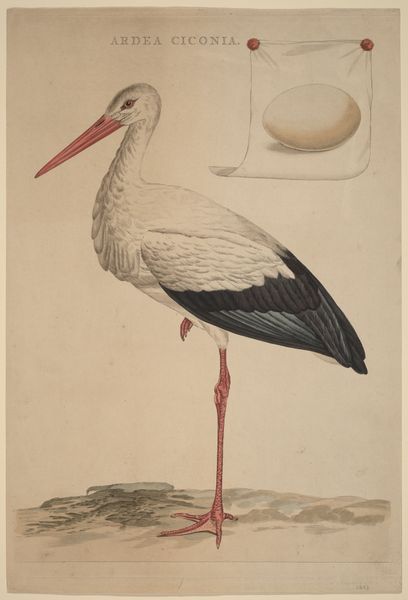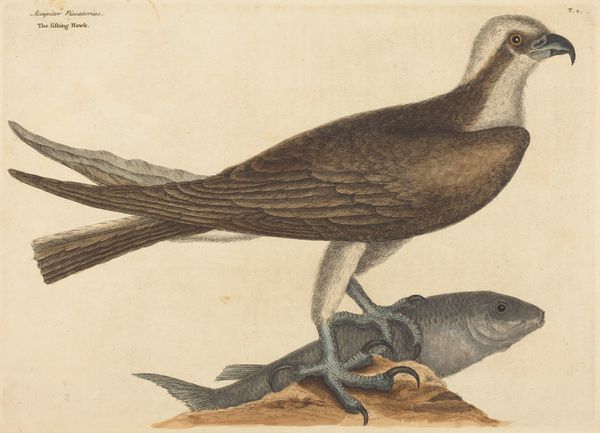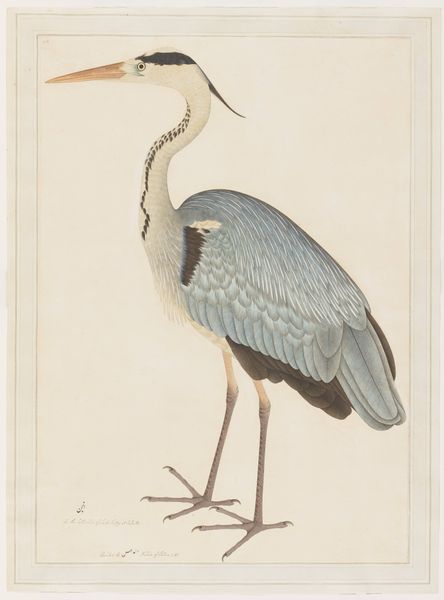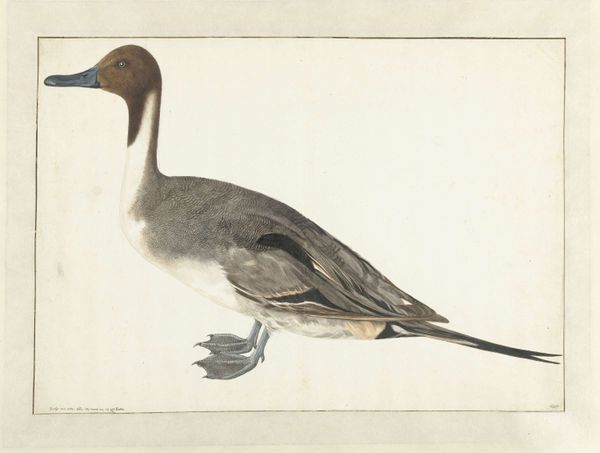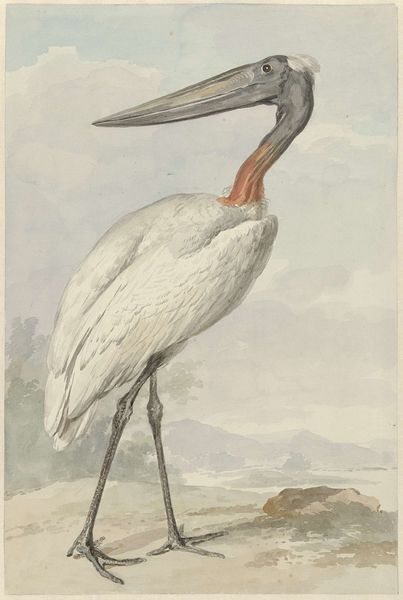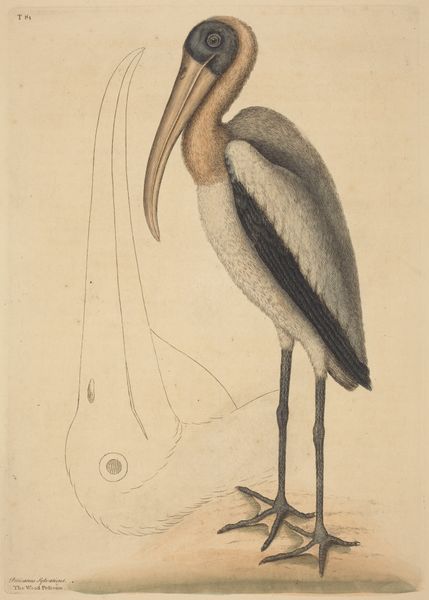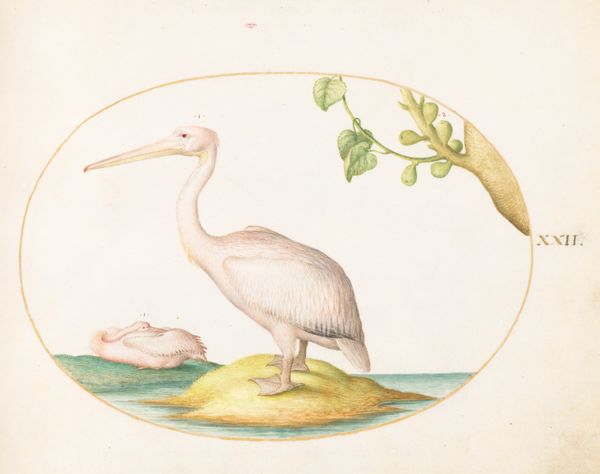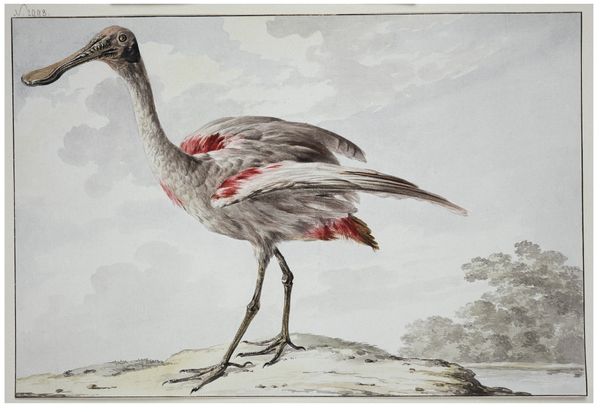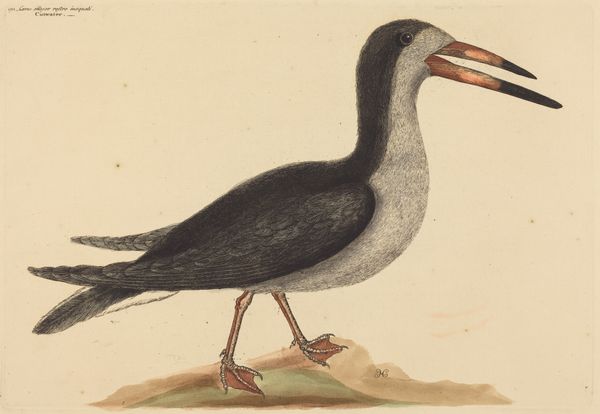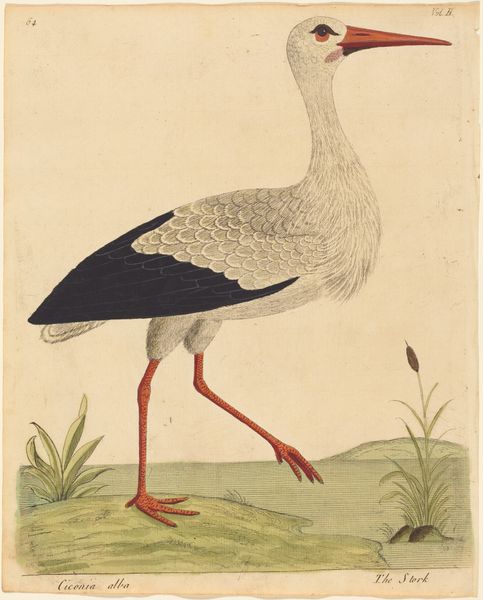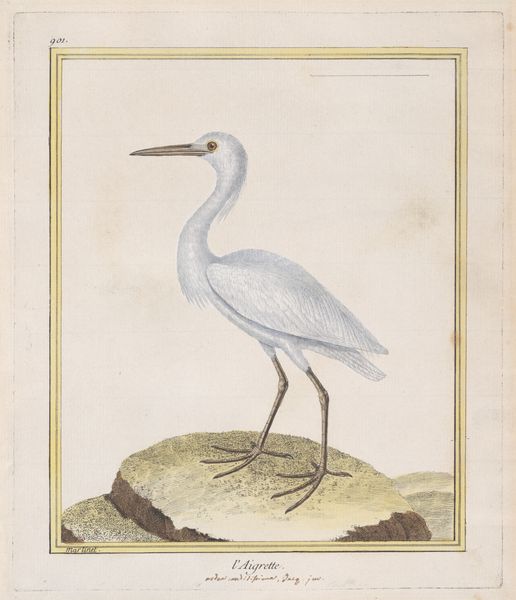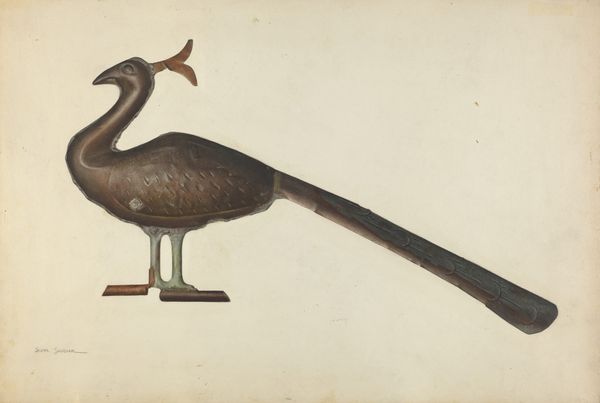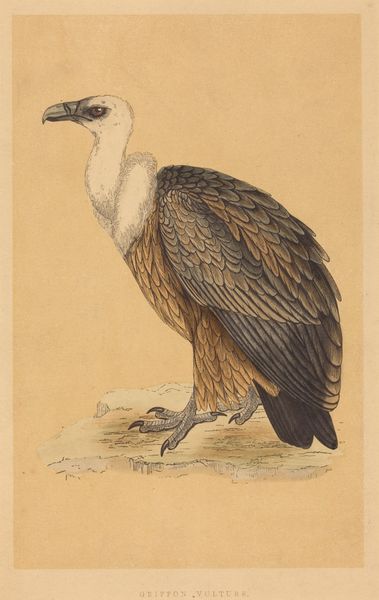
drawing, watercolor
#
portrait
#
drawing
#
asian-art
#
landscape
#
watercolor
#
watercolour illustration
#
watercolor
#
realism
Dimensions: 30 × 38 × 1 in. (76.2 × 96.52 × 2.54 cm) (outer frame)
Copyright: Public Domain
Curator: Looking at this watercolor from around 1780-1782, we find a rather dignified Spot-billed Pelican. Editor: My immediate impression? Such a quiet, contemplative air about it. The bird seems lost in thought, doesn’t it? There's something very gentle in the way the watercolor washes are applied, too. It’s muted. Curator: Well, it's interesting you mention quiet, because this piece is a rendering from the Mughal period, when natural history illustration was being used as a kind of soft power play by the British East India Company. Editor: Ah, so the subdued palette serves the agenda, the "white man's burden," that kind of thing. Were these pieces about celebrating the local culture or exploiting resources and demonstrating dominion? Curator: Exactly. The company employed local artists in India. It's now at the Minneapolis Institute of Art, and it offers a fascinating glimpse into a colonial dynamic masked as scientific inquiry. It makes me consider how “discovery” is framed by the powerful. The "quiet" you sensed feels loaded now, doesn't it? Editor: Massively so. Even the realism feels like an attempt at control, cataloging nature as a means of ownership. Is that detail in the plumage about knowledge or domination? I love that even in the "realistic" pose, it somehow it subtly eludes complete capture. Curator: Perhaps that’s the work of the Indian artist's quiet resistance. These artists infused their skill while being subtly subversive to this commission. Look closer at the texture, or how that eye is rendered with so much intention. It is knowing, alive. Editor: Absolutely, like the bird is fully aware of being scrutinized, resisting the gaze. Makes me wonder about the untold stories of the artist themselves. Thank you, this shifts my perception. Curator: The best art invites us to reassess what we think we see. Thanks for prompting this, and may we continue questioning the frameworks through which we observe the world around us!
Comments
minneapolisinstituteofart almost 2 years ago
⋮
The famed ‘Impey Album,’ to which these 11 natural history studies originally belonged, marks the beginning of a new school in the canon of Indian Painting: that is “Company Painting’’—so called after the British East India Company, which by 1757 had taken effective rule over the sub-continent—spanning from c. 1760-1880 and distinguished by native painters adapting to the needs of Colonial tastes. The result was an emergence of a distinctive Anglo-Indian aesthetic, which we see in the remarkable paintings here. Between 1777-1783, Lady Mary Impey, wife of the recently appointed Chief Justice of Bengal, Sir Elijah Impey, commissioned three artists: a Muslim, Shaik Zain ud-Din, and two Hindus, Bhawani Das and Ram Das (all of whom trained in a Provincial Mughal atelier in the neighboring city of Patna) to record the newfound wonders of her Calcutta aviary and menagerie.
Join the conversation
Join millions of artists and users on Artera today and experience the ultimate creative platform.
